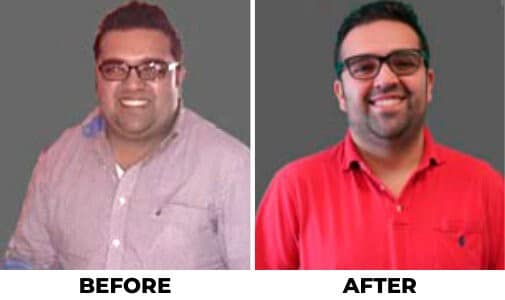Endobariatric Procedures
Endobariatric procedures help individuals achieve sustainable weight loss and improve overall health. As a matter of fact, Obesity is at epidemic levels in the United States. Moreover, over 30% of the adult population falls into BMI categories for obesity.
Many individuals who have higher or heavier body weight suffer from illnesses that are a direct result of their weight.
They need to lose weight but they need a little help and wish to avoid surgery. This is where endobariatrics can help.
What Does Endobariatric Mean?
Endobariatrics describes procedures that help patients lose weight without the use of Bariatric Surgery. This is a relatively new branch of gastroenterology. It can help several groups of patients lose weight through minimally invasive procedures.
Surgeons perform endobariatric procedures using a medical instrument called an endoscope. An endoscope is a small, flexible, and hollow tube that has a camera on the end. The hollow tube enables surgeons to insert and use additional tiny surgical tools during the procedure.
Surgeons perform endoscopic procedures by lowering the endoscope down the patient’s throat. There are no incisions or long extended recovery times. Endobariatric procedures carry fewer risks than surgical procedures and there are no resulting visible scars.
Who is a Candidate for an Endobariatric Procedure?
Individuals with Higher Body Weight
Most bariatric surgeries have BMI requirements of 40+ or 35. Additionally, having obesity-related illnesses such as type 2 diabetes. Some individuals fall just below these qualifications. But would like to take action before they reach the higher BMI threshold for obesity.
Individuals with Heavier Body Weight
Individuals who qualify for bariatric surgery. But wish to take a non-surgical approach to weight loss.
Individuals with Extreme Heavier Body Weight
Sometimes a patient’s health can disqualify them from undergoing surgery. An endoscopic procedure would be an excellent alternative. Surgeons may use it as an interim solution until a patient can safely qualify for surgery.
Endobariatric Weight Loss Procedures
There are different endobariatric weight loss procedures available that offer significantly less invasive solutions than bariatric surgery such as:
Orbera® Balloon Endoscopic Procedure
Orbera® Gastric Balloon is made from soft silicone. Filled with a special saline solution until it reaches the size of a grapefruit. The Orbera® Balloon takes up space in the patient’s stomach. In addition, limits the amount of food they can eat at one time. The balloon also helps the patient feel ‘full” between meals.
Surgeons lower a deflated Orbera® Balloon down the patient’s throat. Using an endoscope, and once positioned, they fill it with saline. The procedure usually takes about 20 to 30 minutes and patients return home the same day. Recovery normally only takes 2-3 days. Surgeons endoscopically remove the Orbera® Balloon from the patient’s stomach after six months since it is only a temporary tool. Patients continue to work with their support team for another six months after the removal of the balloon.
The Orbera® Balloon is accompanied by an entire support program for 12 months. The support includes diet, nutrition, exercise, and other professional support. The patient should aim to make permanent lifestyle changes. It includes maintaining a consistently healthy diet and exercising daily, to ensure they maintain their weight loss results. Patients have lost between 33 and 92 pounds while using the Orbera® Balloon for six months.


ESG Endoscopic Procedure
Surgeons perform Endoscopic Sleeve Gastroplasty (ESG) as a weight loss procedure without surgery, using an endoscope. The surgeons lower a special Apollo ESG suturing device down the endoscope. Then use it to reshape the stomach, making the usable portion smaller.
Later, divide and shape the stomach into a banana-like pouch. Although secure it uses the Apollo ESG system with 7 to 12 sutures. The smaller stomach helps patients feel full for longer. It limits the amount of food they can eat in one sitting.
The procedure takes between 30-45 minutes, in an outpatient facility. Nevertheless, it does not require a hospital stay. Recovery normally takes about a week and patients end up with results similar to gastric sleeve surgery. But without incisions, scars, or the risks associated with a surgical procedure.


Endobariatric Revision
Sometimes patients undergo bariatric surgery and do not experience the weight loss they expected or they regain weight. This can be due to the stomach stretching out since the initial surgery. A widening of the opening at the mouth of the stomach. Surgeons can correct both of these issues. Using the special Apollo Revise Suturing Device through an endoscope, without the need for another surgery.
Endobariatrics - Patient Testimonials
The Orbera© Balloon, ESG, and endoscopic revisions offer patients a tool to help curb their hunger and limit portions. These tools coupled with the patient’s modified eating habits and lifestyle changes. Such as regular exercise, and utilization of ongoing support. These will be successful in helping them lose weight and continue to maintain it.
Watch below the video testimonials of our patients who underwent endobariatric procedures at IBI Healthcare Institute. Download the updated manufacturer’s dietary guidebook for the ESG, Balloons, GSRe, and TORe procedures: English Version and Spanish Version.
IBI Healthcare Institute Expertises in Endobariatrics
At IBI Healthcare Institute, board-certified surgeons perform all endoscopic procedures. Dr. Christopher Ibikunle, MD, FACS was one of the first certified surgeons in the Southeast Region. Besides this, he is a pioneer in endobariatrics, performing endoscopic sleeve gastroplasty (ESG).
However, choosing a surgeon who is qualified to perform an endoscopic weight loss procedure is critical. Achieving the desired goal and mitigating potential risks. Nonetheless, we have urgently needed non-surgical, endoscopic options for years. And there are sustainable alternatives to surgery.
Additionally, we use endoscopic alternatives along with a combination of education, psychological, nutritional, and motivational therapies. Offering patients a holistic approach to wellness.





